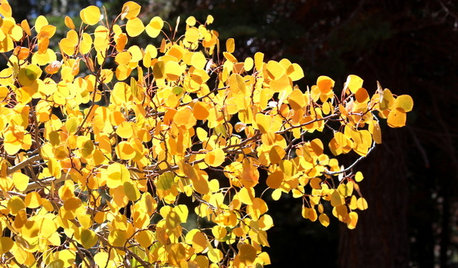Plum trees on own roots
plumdumbyahknow
13 years ago
Related Stories

FRUIT TREESHow to Grow Your Own Juicy Plums
Easier than other stone fruits and with a variety of colors to choose from, plums are a versatile garden addition
Full Story
EDIBLE GARDENSHow to Grow Your Own Luscious Cherries
Nope, they’re not the easiest fruit to grow. But with spectacular blossoms and pies as possibilities, cherries are sure worth a try
Full Story
FRUIT TREESHow to Grow Your Own Persimmons
Sturdy and easy to care for, these trees offer bright fruit through winter — and keeping them in bounds is no sweat
Full Story
EDIBLE GARDENSGrow Plum Hybrids for Your Favorite Fruit Flavors
Plums are cozying up with apricots, peaches and even cherries — here’s how to grow these hybrids for the best aspects of each
Full Story
GARDENING GUIDESGrow Your Own Privacy: How to Screen With Plants and Trees
Use living walls to lower your home and garden's exposure while boosting natural beauty in your landscape
Full Story
ARTThe Beauty of Bonsai — Living Art, Rooted in Harmony
Create your own emblem of nature's balance with an art form dating back 1,000 years
Full Story
GARDENING GUIDESThe Beauty of Bare-Root Plants
Plant dormant trees and shrubs in fall using the easy, affordable bare-root method and enjoy beautiful results in spring
Full Story
EDIBLE GARDENSHow to Grow Your Own European and Asian Pears
Try these trees for their good looks, delicious fruit and wide range of sizes — plus you can espalier them
Full Story
EDIBLE GARDENSHow to Grow Your Own Sweet Summer Crops
This guide will help any gardener get started on growing the freshest warm-season veggies and berries for summer
Full Story
LANDSCAPE DESIGNGreat Design Plant: Quaking Aspen for 3-Season Beauty — on Its Own Turf
It offers bright fall foliage, snowy winter bark and lush green leaves in summer. Just don't try to plant quaking aspen away from its home
Full StorySponsored
Columbus Design-Build, Kitchen & Bath Remodeling, Historic Renovations
More Discussions








fruitnut Z7 4500ft SW TX
plumdumbyahknowOriginal Author
Related Professionals
Folsom Landscape Architects & Landscape Designers · Manhattan Beach Landscape Architects & Landscape Designers · South Orange Landscape Architects & Landscape Designers · Azalea Park Landscape Contractors · Brownsville Landscape Contractors · Concord Landscape Contractors · Crystal Landscape Contractors · Eureka Landscape Contractors · Lakeville Landscape Contractors · Mahwah Landscape Contractors · New Braunfels Landscape Contractors · Soddy Daisy Landscape Contractors · Waipahu Landscape Contractors · Bensenville Landscape Contractors · Gulf Gate Estates Tree Servicesoregonwoodsmoke
alan haigh
theaceofspades
Konrad___far_north
Beeone
Konrad___far_north
iammarcus
Beeone
Konrad___far_north
Beeone